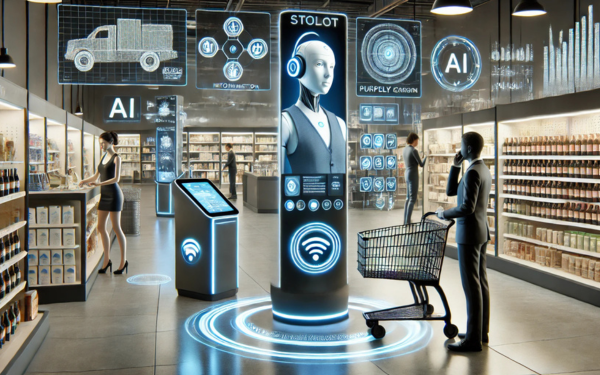In the blink of an eye, Artificial Intelligence (AI) has gone from being the next big thing in technology to an epoch-defining game-changer. No sooner had businesses gotten to grips with the internet, mobile, cloud computing and the rest, AI came along and threw down the gauntlet for yet another round of digital transformation.
Retailers are rising to the challenge and repairing the rewards. According to latest figures from Nvidia, 69% of retailers who have adopted AI into their operations report an increase in annual revenue, while 72% have seen a decrease in operating costs.
So how and where are retailers reaping such big benefits from AI? Here are five areas where AI is ushering in a new retail revolution.
Personalization
One of AI’s biggest strengths is its ability to work with data at previously impossible scales and speeds, and generate actionable insights in close to real time. This means AI is finally solving the ‘personalization problem’ – how to gather, assimilate, analyze and interpret enough behavioral data fast enough to truly tailor the shopping experience to individuals.
During the 2024 holiday season, AI-powered tools such as chatbots and personalized promotions saw a 42% increase in usage compared to the previous year, contributing to a just under 4% rise in online sales, totaling $282 billion. Over the Black Friday period, retailers utilizing AI tools experienced a 9% higher conversion rate, indicating how effective AI-driven personalization is in boosting customer engagement and sales.
In-Store Experience
While the proof of concept for AI personalization is largely being played out in eCommerce for now, physical retailers are by no means being cut out of AI’s benefits. One of the most fascinating areas is how AI is being combined with smart sensor technology to create new opportunities for checkout and payment. Examples range from AI-powered ‘smart carts’ that scan items as people shop, to the now-famous Amazon Go cashierless store experiment.
Looking ahead, this kind of scanning technology will eventually support in-store personalization by tracking customer behavior as they browse shelves and look at items, and using these observations to offer targeted recommendations and promotions via digital screens.
Customer Service
Before generative AI tools like ChatGPT, Gemini and Co-Pilot turned the world upside down, AI-powered chatbots and virtual assistants were the most visible examples of AI in day-to-day life. And they continue to have a significant impact on customer service in retail. Nearly three quarters of consumers are happy interacting with AI chatbots to get real-time support as they shop, such as answering queries or advanced product search. 60% of people have used voice assistants to make purchases.
Again, the use of voice AI is currently more prominent in online retail. But looking forward, there’s no reason why brick-and-mortar stores couldn’t capitalize by having on-shelf voice assistants to answer questions as customers browse, or leverage the technology via information kiosks.
Inventory Management & Supply Chain Optimization
AI-driven analytics is also helping retailers optimize inventory levels and replenishment to maximize product availability at all times and avoid lost sales and disgruntled customers. This is not just happening within individual companies, but is a major trend across the retail supply chain to boost efficiency and reduce costs.
For example, companies like UPS and Amazon have developed reinforcement learning algorithms to enhance supply chain forecasting, improving their ability to match supply with demand and respond to unforeseen circumstances. Amazon is also leading the way on automated inventory control, with operational costs at some fulfilment centres reduced by 25%.
Growing Revenue Streams
Finally, AI is helping retailers unlock revenue growth in a number of different ways. Improved personalization helps to boost average order values (AOVs) by making sure recommendations more accurately reflect what customers want. AI can also be used to adjust pricing in line with dynamic demand forecasting, ensuring continual optimization between volumes and margins. It can also unlock new revenue opportunities by analyzing the market for niches to introduce new products and services.




